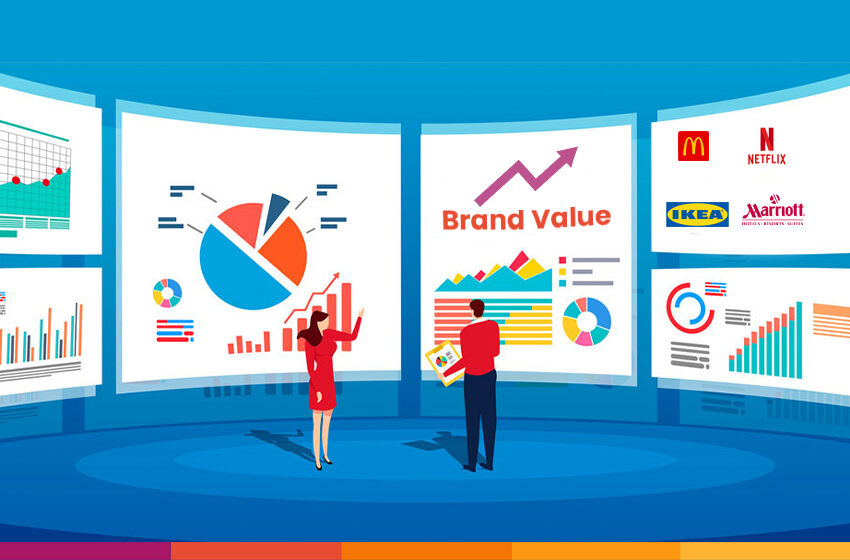
Role of Data Analytics in Optimizing Brand Value – A Case study
Considering the insightful inferences that can be drawn by processing large volumes of data, it comes as no surprise that big data analytics is being used in all imaginable spheres to run data-driven marketing activities. From reshaping the nature of election campaigns as a way of influencing swing voters, to recommending movies based on the viewing habits of customers, data analytics has become a part and parcel of every company trying to get some sense of changing customer dynamics.
This article explores some of the real-world examples of how different entities across different industries are using data analytics to fortify their brand presence and deliver a personalized experience to their customers. Let’s look at some of the interesting applications of data analytics in the context of marketing.
Furniture Industry
IKEA uses an augmented reality app powered by big data to enhance the shopping experience of customers.
People often visit multiple furniture stores to pick the right table that complements the overall aesthetics of their room, only to find out later that the table they chose was not what they wanted. Addressing this common conundrum that plagues most customers, IKEA has created an augmented reality app powered by big data that enables customers to test the product in the comfort of their homes. What’s amazing is that the app scales the product in real-time based on room dimensions with a high degree of accuracy and even allows users to plan the entire space by using a range of furniture options, decorations, and wall colors.
Online Streaming Industry
Netflix uses data analytics to deliver a personalized experience to the user by recommending relevant movies.
We have all become familiar with the customer-engaging tactics of big brands such as Google and Amazon; these brands use big data analytics to recommend the appropriate choices to the users. With video recommendations accounting for over 80 percent of the content streamed on Netflix, no brand uses big data in a way that Netflix does. Not only is the company able to predict successfully what content the viewers are likely to view next, but it can personalize the overall viewing experience by selecting the cover image based on the user profile. So the merchandizing still that you witness in your Netflix profile is very likely to be different from the still that your friend sees in his profile.
Restaurant Industry
McDonald’s adjusts its menu items as per the length of the line for a more responsive fast food experience.
Some futuristic fast-food chains (like McDonald’s and Burger King) are scrutinizing their drive-through lanes and changing the menu items accordingly to deliver a more responsive fast food experience. Essentially, the company will display high-margin items requiring longer preparation time when the line is relatively short and vice versa when the line is long. Deployment of this data-driven strategy has not only allayed the boredom of customers by reducing their waiting time but also maximized the profit margin of restaurants.
Hospitality Industry
Marriot uses data to dynamically price its room rates and enhance the customer experience by deploying Amazon Alexa.
Marriot, the iconic brand in the hospitality domain, has been using data extensively for multiple applications. Apart from using data analytics for dynamic pricing by factoring in various data variants like weather, availability, reservation, and cancellations; the company has also started using facial recognition check-ins, thereby, reducing the time that would otherwise be spent waiting at the reception desk. The company has also deployed Amazon Alexa which has superseded the role of reception staff to a large extent. The company in turn gets all the necessary pieces of information about customer preferences.
Political Sphere
Political aspirants try to comprehend the customer psyche to influence swing voters.
The application of big data is not only confined to the corporate domain as showcased in the Cambridge Analytica fiasco. Just as big corporates use psychometric analysis of consumers for subsequent data-driven applications, Cambridge Analytica was able to extract a useful piece of information from 87 million Facebook users using the data analytics to craft targeted advertising based on the behavior specific to that particular individual. The fact that big data analytical tools have been deployed by every successful presidential candidate since the 2008 US election elucidates how data analytics is being weaponized for shaping the psychology of the masses. Big data analytics has enabled political aspirants to reach out to individual voters through social media.
Conclusion
To sum up, big brands have leveraged the power of data analytics to fortify their brand presence and gain insights into customer psychology. In fact, in the current era of information technology, brands cannot afford to ignore the importance of data. Digital technology is such that data collection and processing is within an arm’s reach of brands. It has become a rat’s race where lagging behind only deprives you of countless opportunities that can spike your brand value. All things considered, it is also important to note that the benefits of using data analytics can only be realized when a brand can tap into a sizable customer base.




